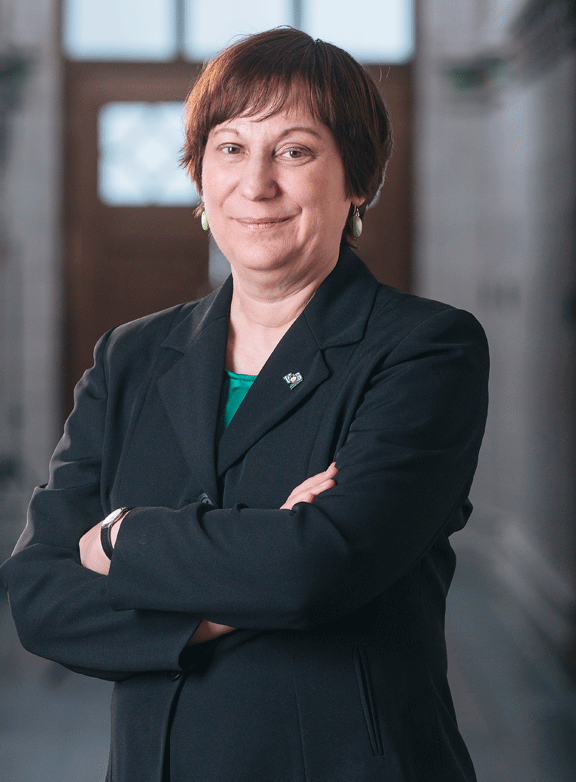Vision for the future: draft statement a starting point for new U of S strategic plan
“The University of Saskatchewan is recognized as among the eminent research-intensive universities of North America; we lead the world in education and research on themes of importance that have an impact on our region, our nation and our world.”
By Colleen MacPherson
This brief draft statement Ilene Busch-Vishniac unveiled April 10 in her state-of-the-university address is the first step toward a new strategic plan for the University of Saskatchewan that the president hopes will galvanize the campus community and reflect its shared vision for the future.
Speaking about the genesis of the statement, Busch-Vishniac explained she has spent the first 10 months of her presidency talking about the university's challenges—the need to restructure the College of Medicine, sustainability, membership in the U15, Aboriginal initiatives—"but they don't tie together without an overarching vision. It became clear that we needed to craft a vision that would help people connect to why we are saying these are major challenges we must address, and where we are trying to get to."
She stressed the vision statement is only a draft, "a starting point for people to consider," and that it could be revised based on feedback.
Busch-Vishniac first took an initial version of the statement to the President's Executive Committee where it was "tweaked to the point we could all feel comfortable with what it said." Many issues were considered, she said, but there was no appetite to use a specific number, as in ‘the U of S will be nth in the world in …', a statement that leaves open the question who will decide if that number is achieved, and by what metrics.
She pointed out the draft makes reference to North America rather than just Canada in terms of where the U of S intends to position itself. Already recognized for its research intensiveness in Canada, Busch-Vishniac said the time is right to "expand our vision to be recognized as among the best of that elite group in North America."
Everyone should be sceptical of unrealistic goals "but to say we want to be recognized among the eminent research universities of North American is an achievable target."
It has been more than 10 years since the U of S last released an overarching vision; Strategic Directions came out in 2002 and was updated in 2010, "but we don't look the same at all," said Busch-Vishniac. "We've changed dramatically in the last decade so I think this is the beginning of crafting a new high-level strategic plan." She added the proposed vision complements rather than conflicts with the university's well-established integrated plans and processes.
"Articulating an overarching vision starting with a statement like this … really helps us inform not only the current integrated plan but plans that will succeed that."
The president said she plans to do some writing over the summer that will contextualize the vision, "and no, I don't have a name for it." An extensive consultation process is being planned for the fall. She imagines using focus groups, town halls, small-group meetings and an electronic comment forum to gauge reaction. "Our aim will be to get as much comment as possible so we get a sense of where we have struck a chord and where have we totally sounded something off key."
Busch-Vishniac said feedback on the draft vision should consider a number of questions, including "what do we want to be when we grow up, and I'm talking about something 10-20 years from now? Where would we like to find ourselves? What do you think are the major challenges that keep us from getting there, and what are our major strengths on which we should build?"
It is important that external stakeholders be given an opportunity to comment too, she said, "but we cannot be everything to everyone, and we are an autonomous institution that must chart out its own future. What our stakeholders say is important; what our internal community says is more important."
Asked when she would like to see a new strategic vision for the university adopted, Busch-Vishniac replied, "the answer is always yesterday."Â The best-case scenario would see a new visionary document completed by the end of the calendar year "but we have an integrated plan, we know what we're doing. This is not a huge departure from where we've clearly been heading so taking as much time as we need to have this conversation is appropriate."

